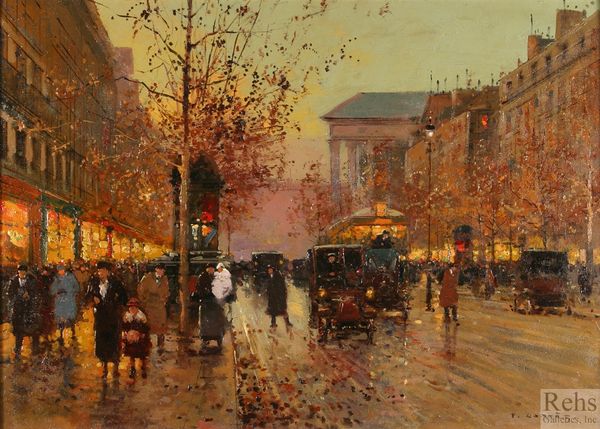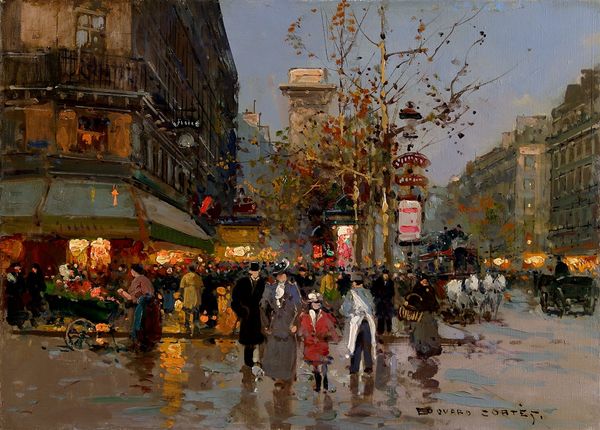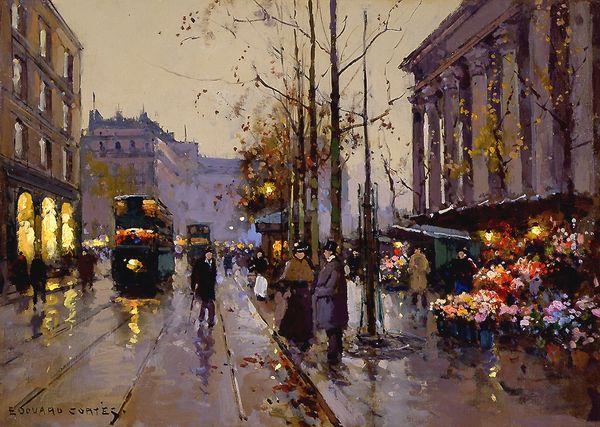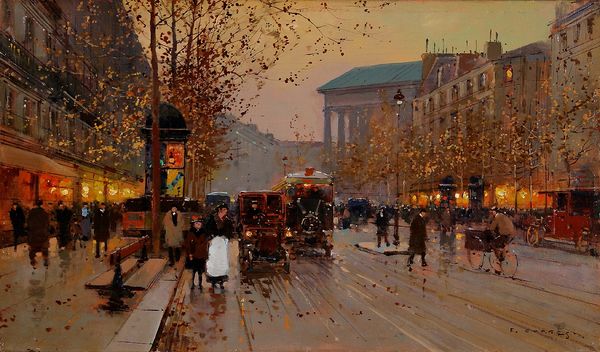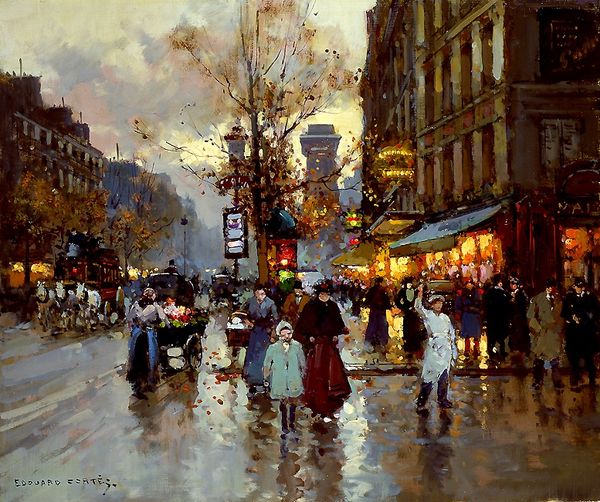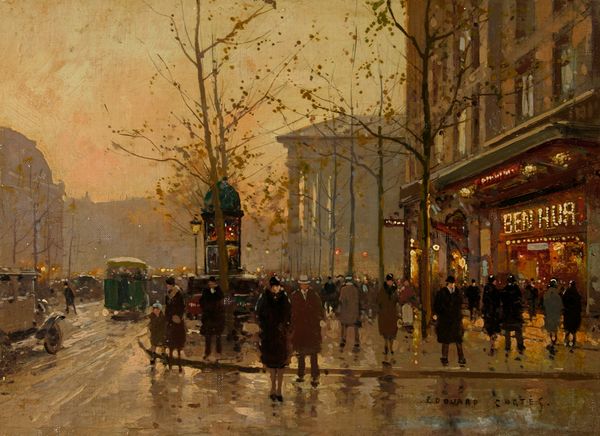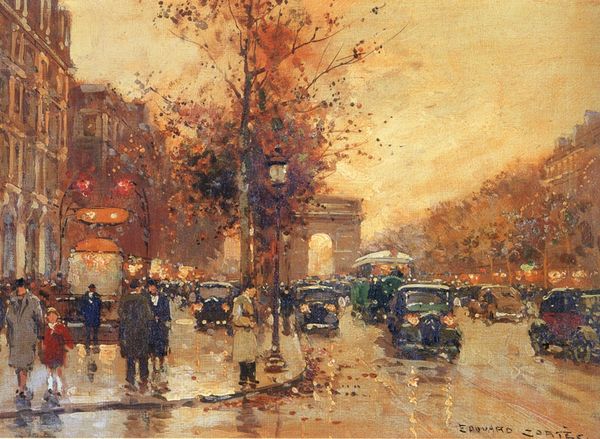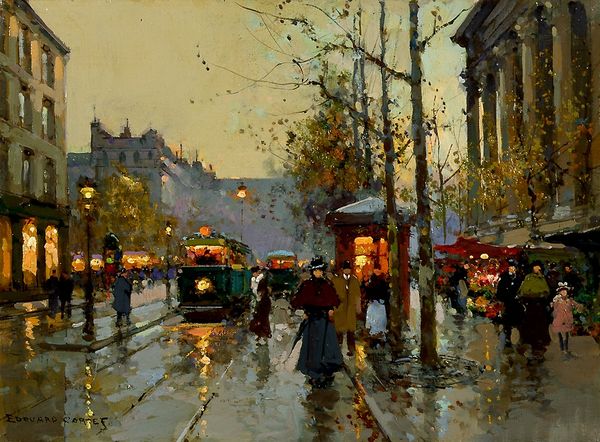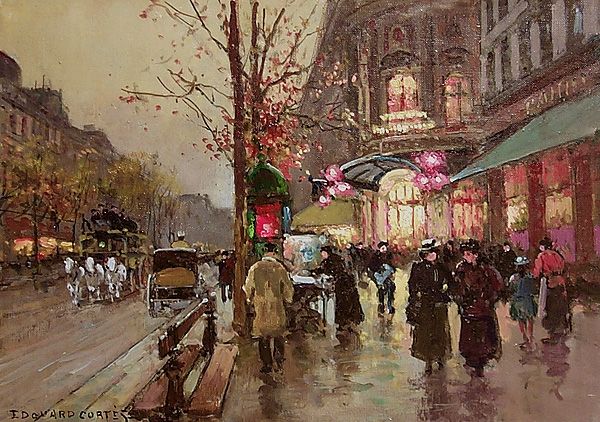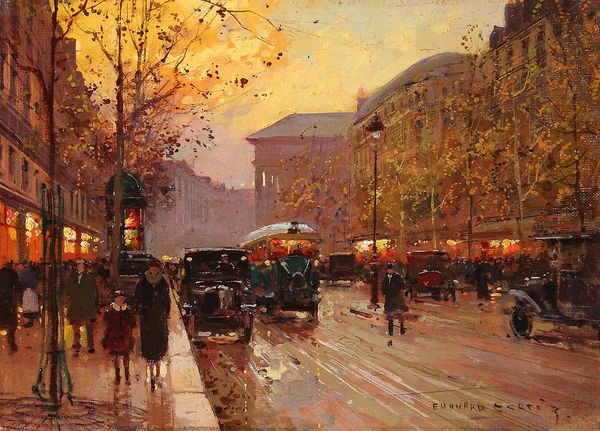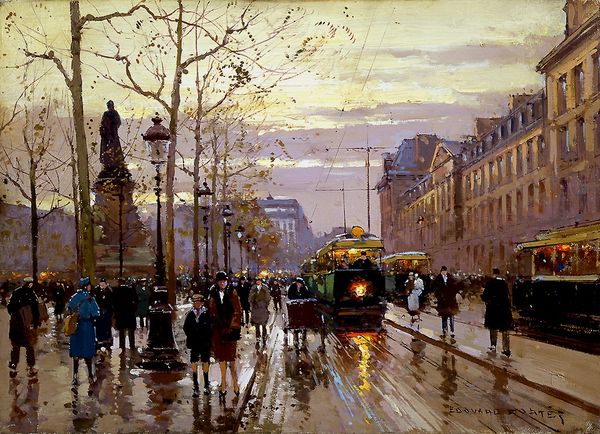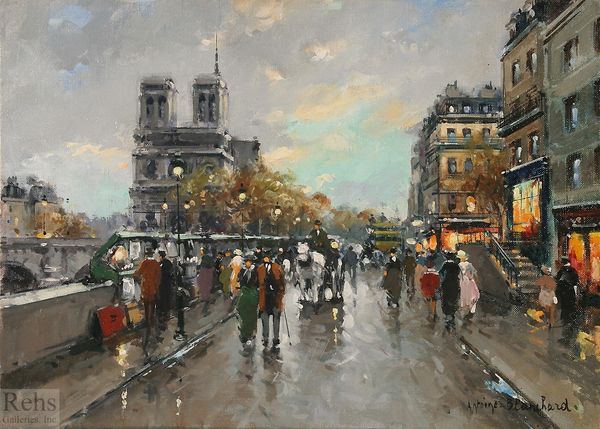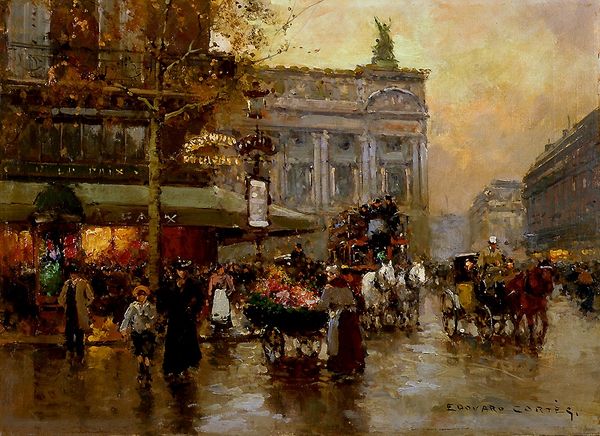
plein-air, oil-paint, impasto
#
baroque
#
impressionism
#
impressionist painting style
#
plein-air
#
oil-paint
#
landscape
#
urban cityscape
#
impressionist landscape
#
oil painting
#
impasto
#
city scape
#
urban art
#
romanticism
#
cityscape
#
street
#
building
Copyright: Edouard Cortes,Fair Use
Curator: The Champs-Élysées comes to us via Edouard Cortes in this striking piece, offering an impressionistic snapshot of Parisian life. Editor: The first thing that strikes me is the texture – you can almost feel the dampness in the air and on the cobblestones. There's a lovely, soft glow that suggests the end of the day. Curator: Right, and notice the palpable presence of oil paint, particularly in the impasto application capturing the light on the wet streets and sidewalks. The physical application of material evokes the city’s own material reality – the paving stones, the buildings' facades, and of course, the burgeoning automobile. This burgeoning industry would have radically altered urban spaces and pedestrian experience during the period. Editor: Precisely. The way Cortes captures that movement is telling, as the Champs-Élysées was known as an epicenter of social life. Cortes is definitely capturing a vibrant urban atmosphere of the Parisian era. You get the sense of different social classes mingling, though subtly segregated in the composition. Did his depiction reinforce or challenge those existing social hierarchies? Curator: Cortes created multiple street scenes, similar to this one. The market for his paintings became highly profitable for him and for the galleries who sold them. These kinds of images are dependent upon the social and material changes of the period and we should also recognize his position within an art market economy. Cortes wasn’t necessarily interrogating power structures, but the very fact that such a scene could be consumed as a work of art speaks to the commodification of everyday urban experience. Editor: It highlights a very specific slice of Parisian modernity. The wide boulevards, the presence of automobiles, electric lights...it’s the city showcasing its progression, even if certain inequalities are just barely hidden beneath that sheen. The city's transition towards consumer culture becomes highly apparent through these images as well. Curator: Absolutely. This work demonstrates the intertwining of material conditions, artistic production, and social experience. It is through these canvases that we come to observe a moment frozen in time. Editor: Ultimately, this painting reminds us that artworks can serve as both aesthetic experiences and complex artifacts of their time, capable of reflecting the social, economic, and political tensions that shaped them.
Comments
No comments
Be the first to comment and join the conversation on the ultimate creative platform.
